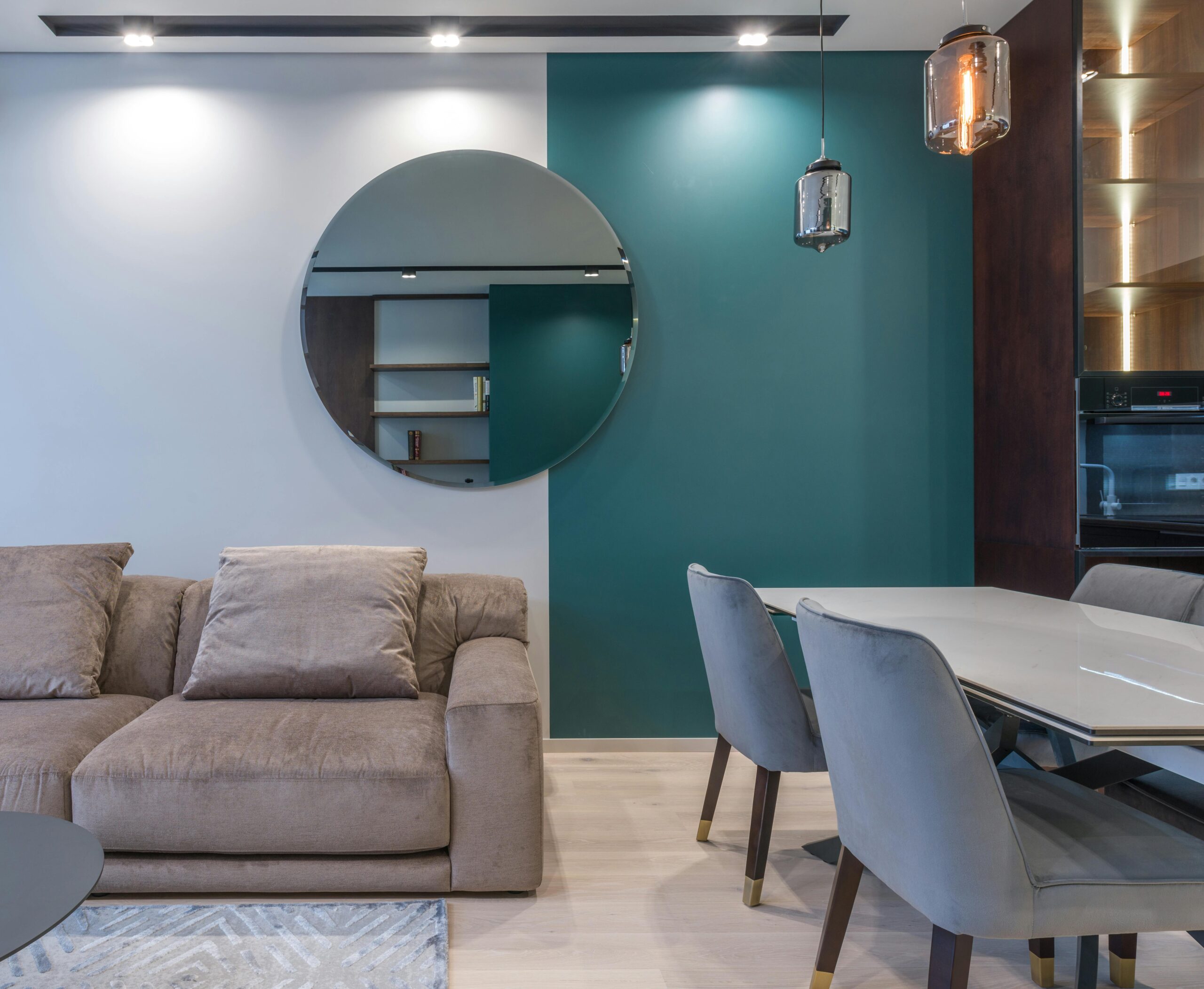Transforming a bland room into a visually captivating space often requires just one strategic design element: an accent wall. This powerful design technique draws the eye to a specific area, creating a focal point that anchors the entire room. Whether you’re considering bold paint colors, textured wallpaper, rustic wood treatments, or decorative tile, accent walls offer endless possibilities for personalization. In this comprehensive guide, we’ll explore various accent wall ideas for living rooms and bedrooms, along with practical tips for implementation that will dramatically elevate your interior spaces.
The Power of Paint in Accent Wall Design
The simplest yet most transformative approach to creating an accent wall is through paint. When selecting a paint accent wall for your living room or bedroom, consider colors that complement your existing decor while providing enough contrast to make a statement. Deep navy blues, rich emerald greens, and charcoal grays are currently trending choices that add sophistication and depth. For smaller spaces, consider using a slightly darker shade of your existing wall color to create subtle dimension without overwhelming the room.
Paint accent wall tips extend beyond just color selection. Consider the finish as well—matte finishes minimize imperfections, while satin or semi-gloss finishes reflect light and can make a space feel larger. For added interest, experiment with paint techniques such as color blocking, ombré effects, or geometric patterns created with painter’s tape. These approaches can elevate a simple painted accent wall into a custom art piece without requiring specialized skills.
The wall you choose for your accent is equally important. In bedrooms, the wall behind the headboard is typically ideal as it naturally draws attention and frames your bed. In living rooms, consider the wall that first catches your eye when entering the space, or the one that houses your fireplace or entertainment center.
Wallpaper: Pattern and Texture for Visual Interest
Wallpaper has experienced a significant revival, offering incredible variety for feature wall design. From bold geometric patterns to subtle textured options, wallpaper provides instant character that paint alone cannot achieve. Modern peel-and-stick options have made wallpaper more accessible, allowing for DIY installation and easy removal when you’re ready for a change.
When selecting wallpaper for an accent wall in living room or bedroom spaces, consider the scale of the pattern in relation to your room size. Larger rooms can handle bold, large-scale patterns, while smaller spaces may benefit from more subtle, smaller patterns. Textural wallpapers like grasscloth add sophisticated dimension without overwhelming a space with busy patterns.
One advantage of wallpaper is its ability to introduce multiple colors at once, creating a cohesive color story that can inspire the rest of your room’s palette. This makes it easier to coordinate furniture, accessories, and textiles throughout the space. Many designers at AskHomey recommend pulling accent colors from your wallpaper pattern for pillows, throw blankets, and artwork to create a cohesive design scheme.
Wood Treatments: Warmth and Texture
Wood accent walls bring natural warmth and texture to any space. From traditional shiplap to reclaimed barn wood or modern slatted designs, wood treatments create an inviting atmosphere that’s both timeless and on-trend. The shiplap wall install process has become increasingly accessible to DIYers, with numerous tutorials and pre-cut materials available at home improvement stores.
For a classic coastal or farmhouse look, white or light-colored shiplap installed horizontally creates a clean, bright backdrop. For more contemporary spaces, consider vertical installation or natural wood tones. Dark-stained wood slats mounted with small gaps between each piece create a sophisticated, modern aesthetic that works particularly well in minimalist spaces.
When planning a wood accent wall, consider the existing architectural features in your room. In bedrooms, a wood accent wall behind the bed creates a built-in headboard effect. In living rooms, extending wood treatment to encompass a fireplace or entertainment center creates a cohesive focal point rather than competing elements.
Stone and Tile: Luxurious Dimension
Stone and tile accent walls bring unique textural elements to interior spaces. Whether you opt for stacked stone, brick veneer, or decorative ceramic tile, these materials add a luxurious, three-dimensional quality to your feature wall design. While traditionally reserved for kitchens and bathrooms, tile accent walls are increasingly appearing in living spaces, particularly in fireplace surrounds or alcoves.
The dimensional quality of stone and tile creates natural shadow lines that change throughout the day as lighting conditions shift, adding visual interest beyond what flat surfaces can provide. These materials also have excellent acoustic properties, potentially improving the sound quality in rooms with hard surfaces.
While stone and tile installations typically require professional expertise, the investment yields a distinctive, high-end result that significantly increases perceived value. Many homeowners find that limiting these premium materials to a single accent wall allows for the luxury look they desire without exceeding their renovation budget.
Creating Balance with Accent Walls
Regardless of which material you choose, the key to a successful accent wall is balance. The accent wall should draw attention without overwhelming the space. Consider your room’s existing architectural features, furniture placement, and color scheme when planning your accent wall. Ideally, your feature wall should enhance these elements rather than compete with them.
Remember that an accent wall doesn’t exist in isolation—it’s part of your overall design scheme. Coordinate your accent wall with complementary colors and textures in your furnishings and accessories to create a cohesive look. This thoughtful approach ensures your accent wall serves as the exclamation point in your design, not a disconnected element.
For more tips and to connect with reliable home service professionals, follow AskHomey on Facebook and Instagram.



